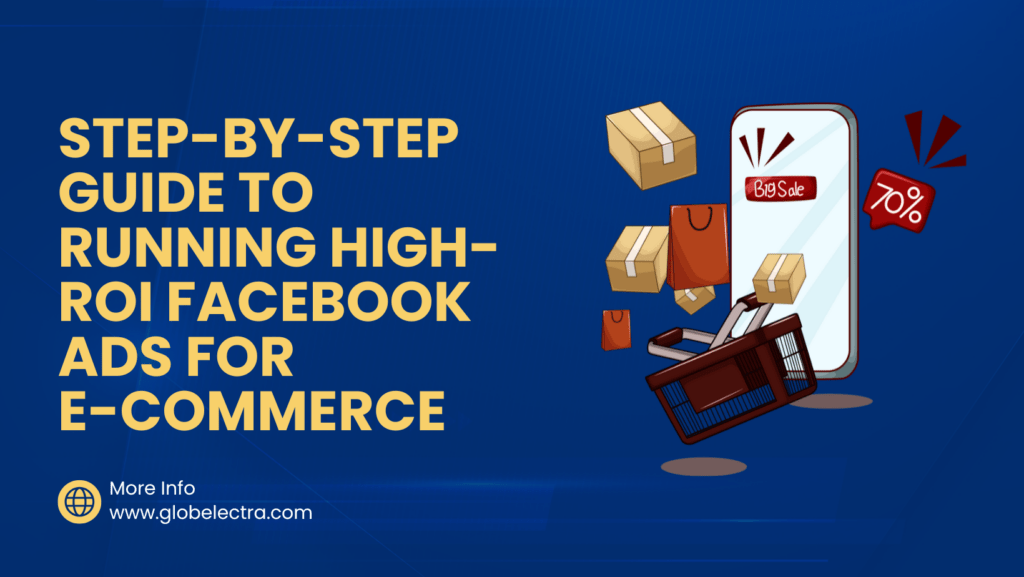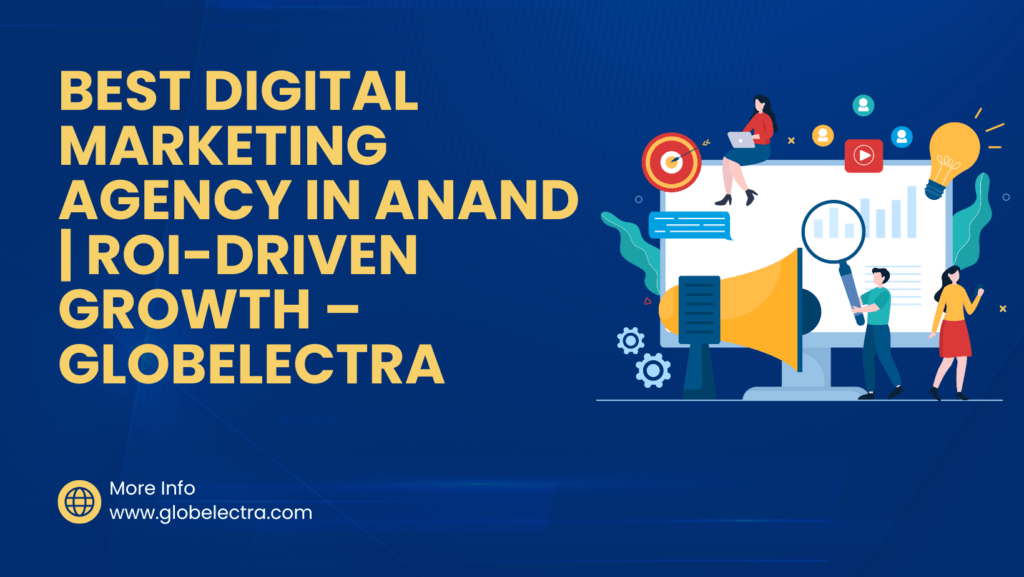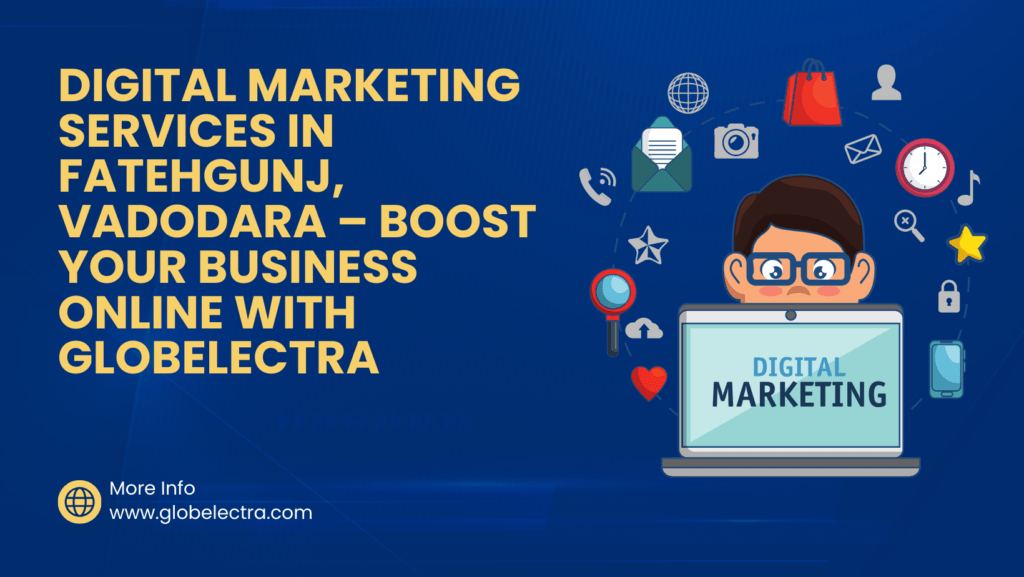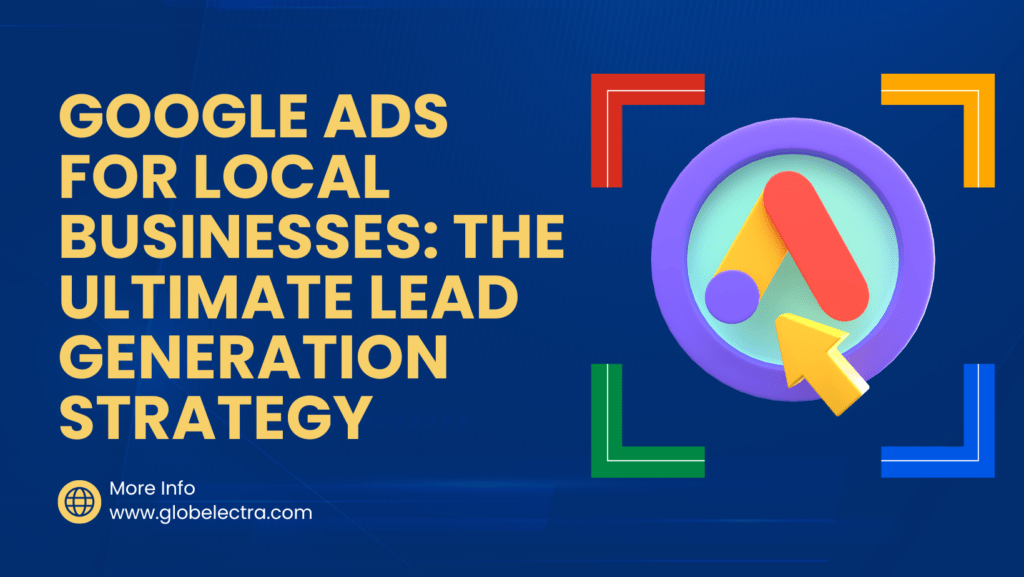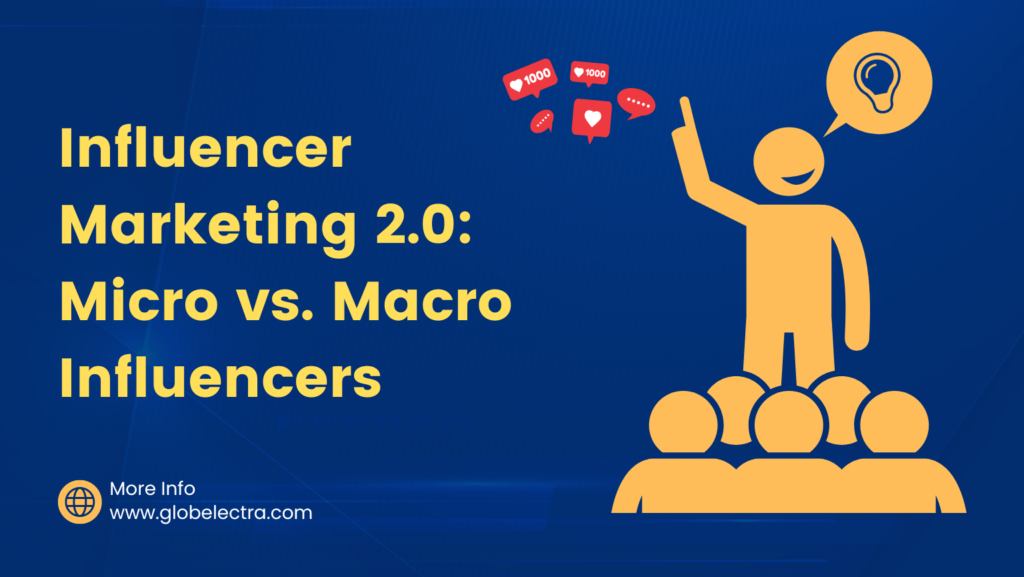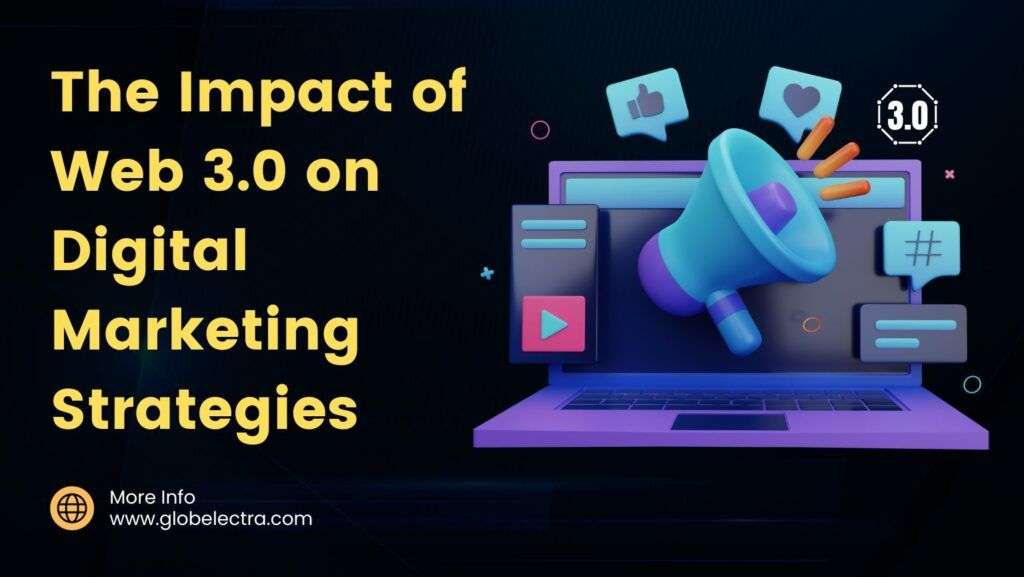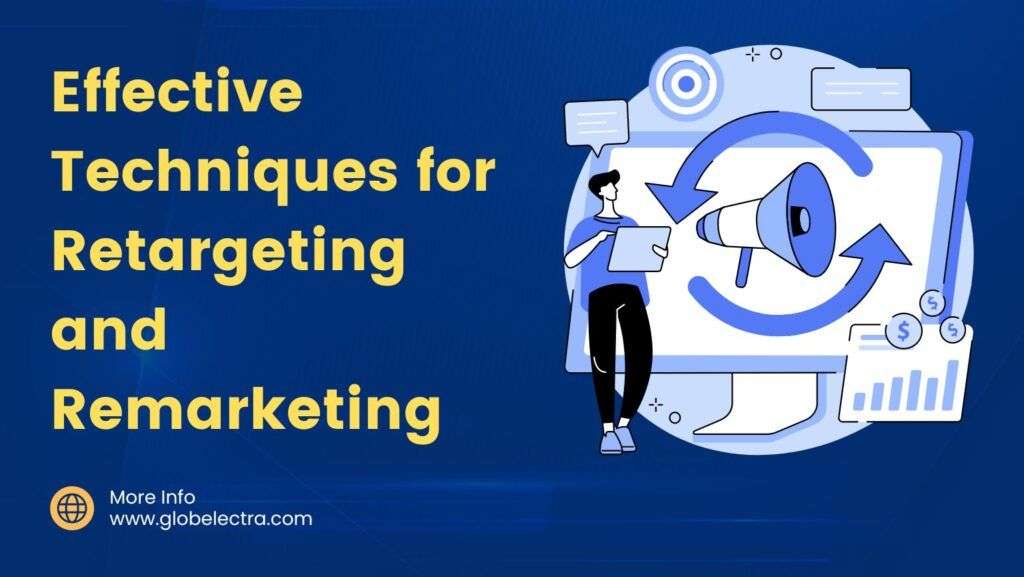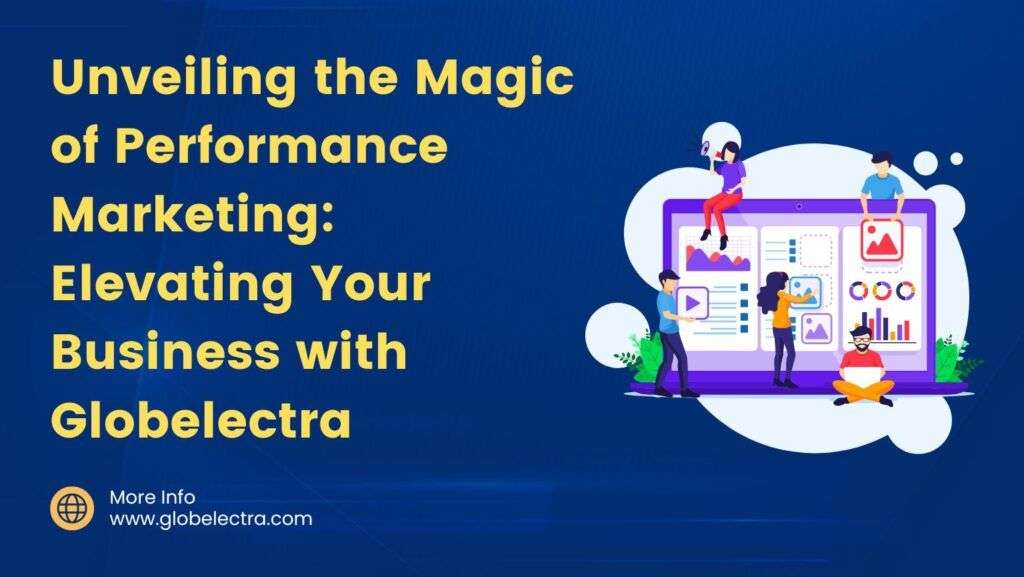Introduction Facebook Ads have revolutionized the way e-commerce businesses attract and convert customers. With its sophisticated targeting options, dynamic ad formats, and vast audience reach, Facebook Ads remain one of the most powerful tools for online retailers. However, achieving a high Return on Investment (ROI) requires strategic planning, compelling creatives, and continuous optimization. In this guide, we’ll walk you through the key strategies to run high-ROI Facebook Ads for your e-commerce store, along with tips to maximize conversions and scale profitably. Why Facebook Ads Work for E-commerce Laser-Targeted Audiences: Facebook’s advanced targeting allows you to reach customers based on demographics, interests, behaviors, and even retarget website visitors. High Engagement & Visual Appeal: With interactive ad formats like carousel ads, video ads, and collection ads, e-commerce brands can showcase their products effectively. Retargeting & Lookalike Audiences: Facebook enables businesses to retarget abandoned carts and create lookalike audiences for high-converting users. Cost-Effective Marketing: When optimized correctly, Facebook Ads provide a lower Customer Acquisition Cost (CAC) than other paid channels. Step-by-Step Guide to Running High-ROI Facebook Ads for E-commerce 1. Define Your Goals & KPIs Before launching an ad campaign, it’s crucial to determine your objective. Some common goals include: Conversions (Sales): Direct purchases from your website. Traffic: Sending users to your landing page or product page. Engagement: Increasing likes, shares, and comments. Lead Generation: Capturing emails for future marketing. Brand Awareness: Spreading visibility about your e-commerce brand. 2. Choose the Right Facebook Ad Format Different products and campaigns perform better with specific ad formats. The most effective ad types for e-commerce include: Carousel Ads: Showcase multiple products in a single ad. Collection Ads: Allow users to explore and shop products without leaving Facebook. Video Ads: Engage audiences with storytelling and product demonstrations. Dynamic Ads: Retarget customers based on products they viewed on your website. Instant Experience (Canvas) Ads: A full-screen mobile experience with interactive elements. 3. Set Up Laser-Targeted Audiences To ensure high ROI, targeting the right audience is key. Facebook offers several audience targeting options: A. Core Audience (Cold Traffic) Interests & Hobbies (Fashion, Fitness, Electronics, etc.) Behavior-based targeting (Online Shoppers, Frequent Buyers) Demographics (Age, Gender, Location, Income level) B. Custom Audiences (Warm Traffic) Website visitors (via Facebook Pixel tracking) Cart abandoners Video viewers & social media engagers C. Lookalike Audiences (Scaling Up) Create Lookalike Audiences of your top buyers to find similar high-potential customers. 4. Optimize Your Ad Creatives & Copy Use High-Quality Visuals: Ensure your product images are clear, well-lit, and visually appealing. Add Social Proof: Showcase user testimonials, reviews, and UGC (User-Generated Content). Write Engaging Ad Copy: Highlight benefits, offer limited-time discounts, and use strong CTAs (Call-To-Actions) like “Shop Now,” “Claim Your Discount,” or “Get Yours Today.” Test Different Variations: A/B test multiple versions of images, headlines, and ad descriptions. 5. Retargeting for Maximum Conversions Retarget Website Visitors: Show dynamic product ads to users who browsed but didn’t purchase. Cart Abandonment Ads: Remind users about products left in their cart with a discount offer. Engaged Audience Retargeting: Target users who interacted with previous ads, watched videos, or engaged with social media posts. 6. Budget Allocation & Bidding Strategy Start with a Small Budget: Begin with a $5-$10/day budget per ad set and scale up profitable campaigns. Use CBO (Campaign Budget Optimization): Allows Facebook to allocate your budget dynamically to the best-performing ad sets. Optimize for Conversions: Ensure your campaign objective is set to ‘Conversions’ for better results. Monitor ROAS (Return on Ad Spend): Scale campaigns that generate the highest ROI while pausing or optimizing underperforming ones. 7. Track & Analyze Performance Use Facebook Ads Manager and Google Analytics to measure key performance indicators: CTR (Click-Through Rate): Measures how engaging your ads are. CPC (Cost Per Click): The lower, the better. ROAS (Return on Ad Spend): Ensure it’s profitable (at least 3X return is ideal). Conversion Rate: Track how many ad clicks turn into sales. Engagement Rate: Helps understand how well your ad resonates with the audience. Best Digital Marketing Agency in Vadodara for Facebook Ads If you’re looking for a top digital marketing agency in Vadodara to run high-ROI Facebook Ads for your e-commerce brand, Globelectra is the perfect choice. With expertise in: Facebook & Instagram Ad Management E-commerce Growth Strategies Conversion Optimization & Retargeting Google Ads & SEO for Online Stores Content & Influencer Marketing Globelectra ensures maximum ROI with data-driven ad strategies tailored to your business. Whether you need product awareness, lead generation, or high-ticket sales, our team specializes in performance marketing that drives results. Conclusion Facebook Ads remain one of the most powerful marketing channels for e-commerce businesses, but success requires the right strategies. By setting clear goals, choosing the best ad formats, targeting the right audience, optimizing creatives, and leveraging retargeting, you can achieve high-ROI campaigns. If you need expert guidance, Globelectra, Vadodara’s top digital marketing agency, can help you scale your e-commerce brand profitably. Get in touch today and start generating more sales with Facebook Ads! Ready to Skyrocket Your E-commerce Sales? Contact Globelectra Today!
Category Archives: Digital Marketing
Looking for the Best Digital Marketing Agency in Anand? In today’s digital-first world, businesses in Anand, Gujarat must embrace online marketing to stay ahead of their competitors. Whether you own a startup, real estate agency, coaching institute, hotel, retail store, or e-commerce business, having a strong digital presence is crucial for growth. At Globelectra, we specialize in ROI-driven digital marketing strategies tailored for businesses in Anand. Our expertise in SEO, Google Ads, Social Media Marketing, and Website Development helps brands increase visibility, attract leads, and boost sales effectively. Why Digital Marketing is Essential for Businesses in Anand Anand, known as the Milk Capital of India, is home to numerous local businesses, startups, educational institutions, and industries. With a growing population and increasing digital adoption, customers are searching for products and services online more than ever. 📌 Did you know?✔ 80% of customers search online before making a purchase.✔ Google Ads increase brand visibility by 90% in local searches.✔ Social Media Marketing can boost brand engagement by 50%.✔ Businesses investing in SEO get 10X more organic traffic compared to paid ads alone. If your business is not online, you are missing out on potential customers every day! That’s why partnering with the best digital marketing agency in Anand – Globelectra – can help you grow exponentially. Our Digital Marketing Services in Anand At Globelectra, we offer a wide range of digital marketing solutions to help businesses thrive in Anand. 1. Search Engine Optimization (SEO) – Rank #1 on Google ✔ Get your business listed on Google’s first page for relevant keywords.✔ Improve website ranking with on-page & off-page SEO strategies.✔ Target customers searching for services like “best digital marketing agency in Anand”. 💡 Example: If you own a restaurant in Anand, we optimize your website to rank for keywords like “best restaurants in Anand” to attract more customers. 2. Google Ads (PPC) – Instant Leads & Maximum ROI 🚀 Google Search Ads – Get leads directly from Google searches.🎯 Display Ads – Boost brand awareness across millions of websites.📹 YouTube Ads – Target your audience through engaging video ads.📍 Local Ads – Get featured in Google Maps & Business Listings. 💡 Example: If you run a coaching institute in Anand, we run Google Ads targeting “best coaching classes in Anand” to bring more student inquiries. 3. Social Media Marketing (SMM) – Build Your Brand Online 📲 Facebook & Instagram Ads – Engage local customers & increase conversions.💡 LinkedIn Marketing – Attract B2B clients & professionals.📸 Creative Content – High-quality visuals, videos & reels to drive engagement. 💡 Example: A real estate business in Anand can attract buyers with Facebook & Instagram ads showing virtual property tours. 4. Website Development – Create a Strong Digital Presence Your website is your digital storefront. We create:✔ SEO-friendly, fast & mobile-responsive websites.✔ E-commerce stores for businesses selling products online.✔ Landing pages for high-converting ad campaigns. 💡 Example: If you run a hotel in Anand, we design a website that allows direct bookings & improves your Google search ranking. 5. Lead Generation & Performance Marketing 📌 Industries We Serve:✅ Education & Coaching Institutes – Student lead generation campaigns.✅ Real Estate & Builders – High-ticket property sales through digital ads.✅ Retail & E-commerce – Increase online sales with data-driven marketing.✅ Healthcare & Clinics – Google Ads & SEO for patient appointment bookings.✅ Local Businesses & Startups – Social media and SEO strategies to build brand presence. Why Choose Globelectra – The Best Digital Marketing Agency in Anand? With several digital marketing companies available, here’s why Globelectra stands out: ✔ Google & Meta Ads Certified Experts – We create high-converting ad campaigns.✔ Data-Driven Approach – Every decision is based on analytics & performance tracking.✔ Proven ROI-Focused Strategies – We ensure every rupee spent delivers results.✔ Transparent Reporting – Regular insights into ad performance & growth.✔ Customized Marketing Plans – Strategies tailored to each client’s goals & budget. 🚀 We have helped businesses in Anand achieve 3X-5X ROI on their digital marketing campaigns! Client Success Stories – How We Helped Businesses in Anand Grow 📌 Case Study 1:A coaching institute in Anand was struggling to get admissions. Our Google Ads & SEO strategy resulted in a 300% increase in student inquiries within 3 months. 📌 Case Study 2:A local retail store wanted to increase sales. Our social media marketing & influencer collaborations generated a 40% revenue boost in just 60 days. 📌 Case Study 3:A real estate agency in Anand was looking for high-quality leads. Our targeted Facebook & Instagram Ads resulted in 20+ property inquiries per month. Partner with the Best Digital Marketing Company in Anand – Globelectra If you want to grow your business online, drive more leads, and increase revenue, Globelectra is your trusted digital marketing partner in Anand. 📞 Call Us Today: [+91 99982 19493]🌍 Visit Our Website: Globelectra 🚀 Get a Free Digital Marketing Consultation Now!
In today’s digital era, businesses in Fatehgunj, Vadodara need more than just traditional marketing to succeed. With customers searching for products and services online, it’s essential to establish a strong digital presence to stay ahead of the competition. At Globelectra, we offer result-driven digital marketing services in Fatehgunj, Vadodara, tailored to help local businesses generate leads, increase sales, and build brand authority. Whether you own a coaching institute, restaurant, retail store, clinic, or corporate business, our expertise in SEO, Google Ads, social media marketing, and website development will give your business the online exposure it deserves. Why Does Your Business in Fatehgunj Need Digital Marketing? Fatehgunj is a hub of commercial activities with businesses spanning across various industries, including education, hospitality, healthcare, and retail. With such a competitive landscape, traditional marketing alone is no longer enough. Here’s why: 🔹 80% of customers search for local businesses on Google before making a purchase.🔹 Social media platforms like Facebook, Instagram, and LinkedIn influence buying decisions.🔹 Businesses using Google Ads see an ROI of up to 200% on their ad spend.🔹 Websites that appear on the first page of Google receive over 75% of clicks. With our digital marketing expertise, we help businesses in Fatehgunj, Vadodara stand out online, attract potential customers, and grow their revenue exponentially. Our Digital Marketing Services in Fatehgunj, Vadodara At Globelectra, we provide customized digital marketing strategies to meet the unique needs of your business. Here’s what we offer: 1. Google Ads & Pay-Per-Click (PPC) Advertising Want instant leads and sales? Our Google Ads experts create high-converting ad campaigns targeting customers in Fatehgunj, Vadodara, and nearby areas. Whether it’s search ads, display ads, or YouTube ads, we optimize your campaigns for maximum ROI. 2. Search Engine Optimization (SEO) – Rank #1 on Google 🔹 Optimize your website to rank higher on Google for local searches.🔹 Target relevant keywords like “best digital marketing agency in Fatehgunj” to increase traffic.🔹 Implement on-page & off-page SEO strategies to build domain authority. Our SEO services in Fatehgunj help businesses attract organic leads without spending on ads. 3. Social Media Marketing (SMM) – Build Brand Awareness 🚀 Facebook, Instagram & LinkedIn Marketing to engage your audience.📢 Targeted Ad Campaigns to increase followers, engagement, and sales.📸 Creative Social Media Content that boosts brand credibility. We craft custom social media strategies for businesses in Fatehgunj, Vadodara to enhance online visibility and customer engagement. 4. Website Development – Your Digital Storefront Your website is the first impression of your business. We create:✔ SEO-friendly, mobile-responsive websites✔ Fast-loading landing pages for ad campaigns✔ E-commerce websites for product-based businesses Having a well-optimized website ensures that visitors convert into customers. 5. Lead Generation for Local Businesses We specialize in lead generation for:✅ Coaching Institutes & Educational Businesses✅ Restaurants & Cafes✅ Doctors, Clinics & Healthcare Providers✅ Real Estate & Construction Companies✅ Retail Stores & E-commerce Businesses Our conversion-focused approach ensures that every rupee spent on marketing delivers maximum returns. Why Choose Globelectra – The Best Digital Marketing Agency in Fatehgunj, Vadodara? There are many digital marketing agencies, but Globelectra stands out because of our data-driven strategies, customized solutions, and proven results. ✅ We Deliver Results, Not Just Promises! Unlike other agencies that focus on vanity metrics, we focus on actual business growth – more leads, higher conversions, and increased revenue. ✅ Industry Experts with Proven Track Record With a team of Google Ads experts, SEO strategists, content creators, and social media marketers, we have successfully helped multiple businesses in Vadodara grow online. ✅ Customized Digital Marketing Strategies We don’t believe in one-size-fits-all marketing. Every business has unique needs, and we create a custom marketing plan tailored for your business and target audience. ✅ Affordable Pricing for Small & Large Businesses Our digital marketing services are designed to fit all budgets, ensuring you get high ROI without overspending. Get a Free Consultation with the Best Digital Marketing Agency in Fatehgunj, Vadodara! If you are looking for a trusted digital marketing company in Fatehgunj, Globelectra is here to help! Whether you need Google Ads, SEO, social media marketing, or website development, we have the expertise to grow your business online. 📞 Call Us Today: [+91 99982 19493]🌍 Visit Our Website: Globelectra 🚀 Let’s take your business in Fatehgunj, Vadodara, to the next level with digital marketing!
Google Ads for Local Businesses: The Ultimate Lead Generation Strategy Why Google Ads Matter for Local Businesses For small and local businesses, Google Ads can be a game-changer when it comes to attracting high-quality leads. Unlike traditional marketing, Google Ads allow businesses to appear in front of potential customers exactly when they’re searching for your products or services. For example, if you own a salon, restaurant, real estate agency, or coaching institute in Vadodara, Google Ads ensures that your business appears when someone searches for “best salon near me” or “top real estate agent in Vadodara”—right when they are ready to take action. As the Best Digital Marketing Agency in Vadodara, we at Globelectra specialize in Google Ads lead generation strategies that deliver results for local businesses. 🚀 Step-by-Step Strategy for Running Google Ads for Local Businesses 1. Choose the Right Google Ads Campaign Type Google Ads offers multiple ad formats, but for local businesses, these work best: ✅ Search Ads – Appear at the top of search results when users search for your services. (e.g., “Best digital marketing agency in Vadodara”)✅ Google My Business (GMB) Ads – Promote your Google Business Profile for location-based searches.✅ Display Ads – Show banner ads to local users on relevant websites.✅ YouTube Ads – Reach potential customers watching related content in your area. 2. Target the Right Audience with Location-Based Settings To generate leads for a local business, geotargeting is crucial. In your Google Ads settings: ✔ Set your ads to show only in Vadodara and nearby areas.✔ Use radius targeting to reach people within 5-10 km of your business.✔ Optimize for mobile users, as most local searches happen on smartphones. 💡 Example: If you own a dental clinic in Vadodara, targeting a 10km radius ensures you reach potential patients in your area. 3. Optimize Keywords for Local Searches Using high-intent local keywords ensures your ads appear for relevant searches. Some keyword examples: 🔹 Best digital marketing agency in Vadodara🔹 Affordable interior designer near me🔹 Best gym in Vadodara with personal trainer🔹 Top real estate agents in Vadodara 💡 Pro Tip: Use Google Keyword Planner to find trending local search terms. 4. Create High-Converting Ad Copies & CTAs Your ad text should: ✅ Clearly state your USP (Unique Selling Proposition) (e.g., “ROI-Driven Google Ads for Local Businesses”)✅ Have a strong CTA (e.g., “Call Now for a Free Consultation”)✅ Include location-based elements (e.g., “Serving Vadodara Businesses Since 2015”) 5. Use Google Ads Extensions for Better Visibility Google Ads extensions help improve your ad’s performance: ✔ Call Extension – Let users call directly from the ad.✔ Location Extension – Display your business location on Google Maps.✔ Site Link Extension – Direct users to different pages (e.g., “Services,” “Reviews”). 💡 Example: If you run a restaurant in Vadodara, adding a Call Extension allows customers to book a table directly from Google Search. 6. Optimize Landing Pages for Higher Conversions Your landing page is where visitors convert into leads, so make sure it: ✅ Loads fast and is mobile-friendly✅ Has a strong CTA (e.g., “Book Your Free Consultation Today”)✅ Displays customer testimonials & Google reviews✅ Includes a lead form or WhatsApp chat button 💡 Example: As the best digital marketing agency in Vadodara, we always design high-converting landing pages for our clients. 7. Track & Optimize Your Ads for Maximum ROI Google Ads is not a set-it-and-forget-it strategy. You need to: ✔ Monitor CTR (Click-Through Rate), CPC (Cost Per Click), and Conversion Rates✔ A/B test ad copies, landing pages, and CTAs✔ Use Google Analytics & Google Ads conversion tracking to measure success 💡 Fact: Businesses that optimize their Google Ads weekly see a 20-30% increase in conversions. Why Choose Globelectra – The Best Digital Marketing Agency in Vadodara for Google Ads? Running high-converting Google Ads campaigns requires expertise. That’s where Globelectra comes in! ✅ Google Ads Certified Experts – Our team specializes in lead generation for local businesses.✅ ROI-Focused Campaigns – We ensure every rupee spent generates maximum leads.✅ Custom Strategies – Every business is unique, and so is our approach.✅ 100% Transparency – We provide detailed performance reports to track your ROI. 🚀 Whether you’re a doctor, lawyer, retailer, or real estate agent, we help you generate high-quality leads with Google Ads. 📞 Want to skyrocket your business with Google Ads? Contact the best digital marketing agency in Vadodara today! Final Thoughts Google Ads is one of the most powerful tools for local lead generation, but strategy matters. If you want to see real results, working with a trusted Google Ads agency like Globelectra can make all the difference. 🚀 Looking for expert Google Ads management? 📞 Contact Globelectra, the best digital marketing agency in Vadodara, and let’s grow your business together!
Influencer marketing has evolved dramatically over the last decade. What started as a strategy dominated by celebrities and large-scale influencers has now diversified into a tiered approach, where micro and macro influencers play significant roles. As brands seek authenticity, engagement, and high ROI, the question arises: which is better for your business—micro influencers or macro influencers? In this blog, we’ll explore the key differences between micro and macro influencers, and how to determine the best fit for your brand’s influencer marketing strategy. Understanding Micro and Macro Influencers Before diving into the comparison, it’s important to define both categories. Micro Influencers: Typically, micro influencers have between 10,000 to 100,000 followers. They are often considered niche experts in specific fields such as beauty, fitness, or travel. Their smaller following usually results in a more engaged audience, and they tend to have a closer relationship with their followers. Macro Influencers: Macro influencers, on the other hand, have between 100,000 to 1 million followers (sometimes more). They are usually well-known personalities, content creators, or subject matter experts in their field, with a broad audience reach across various demographics. Key Differences Between Micro and Macro Influencers 1. Audience Size vs. Engagement Rate Micro Influencers: One of the primary reasons brands choose micro influencers is their high engagement rate. Although their audience is smaller, their followers tend to be highly active, often leading to more meaningful interactions, comments, and shares. Micro influencers tend to have an engaged niche audience that trusts their recommendations. Macro Influencers: Macro influencers offer extensive reach, meaning your brand’s message can be spread to a much larger audience. However, as audience size grows, engagement rates tend to decrease. Followers of macro influencers are less likely to have a personal connection with them, which may result in fewer meaningful interactions. 2. Cost Micro Influencers: Working with micro influencers is generally more cost-effective. Smaller influencers are often willing to collaborate in exchange for free products or lower fees. This makes them a viable option for small to mid-sized businesses looking to stretch their marketing budget. Macro Influencers: Due to their massive following and influence, macro influencers charge significantly higher rates. Brands with larger budgets may benefit from the widespread visibility that macro influencers provide, but the high cost may not always translate into a higher ROI. 3. Niche Focus Micro Influencers: Micro influencers tend to focus on very specific niches, making them ideal for brands targeting a particular demographic. For instance, if you’re a vegan skincare brand, partnering with a micro influencer who specializes in vegan beauty can result in highly targeted exposure. Macro Influencers: Macro influencers often cater to broader, more general audiences. While this can help brands reach a wider demographic, it may not always result in the most targeted exposure. If your brand appeals to a specific niche, macro influencers may not deliver the same level of relevance. 4. Authenticity and Trust Micro Influencers: With their smaller following, micro influencers often maintain closer, more authentic relationships with their audience. Their followers see them as relatable and trustworthy, making their endorsements feel more genuine. This level of trust can lead to higher conversion rates when it comes to product recommendations. Macro Influencers: While macro influencers have large audiences, they may struggle with authenticity. Many followers see macro influencers as celebrities, making their endorsements appear more like traditional advertisements. As a result, macro influencer recommendations may not carry the same level of trust and authenticity as those from micro influencers. 5. Campaign Flexibility Micro Influencers: Because of their lower costs and more personalized approach, micro influencers are often easier to work with in terms of campaign flexibility. Brands can collaborate with several micro influencers at once, diversifying their campaigns and reaching multiple niches without exceeding their budget. Macro Influencers: Macro influencers typically come with structured contracts, and their campaigns may be less flexible. Brands must be prepared for a more formal process, and the scale of collaboration can limit creative input or alterations once a campaign has been set in motion. When to Use Micro Influencers Micro influencers are ideal for brands with specific goals like: Niche Targeting: When your product caters to a particular audience (e.g., vegan, eco-conscious, fitness-focused). Maximizing Engagement: If you’re aiming for high engagement rates, micro influencers will often provide better results in terms of likes, comments, and conversions. Cost-Effectiveness: Micro influencers are a great option for brands with limited budgets who want to stretch their marketing dollars further. Example: A skincare brand that wants to reach eco-conscious millennials might collaborate with several micro influencers who focus on eco-friendly lifestyles. The personalized recommendations from trusted influencers will help create a loyal customer base. When to Use Macro Influencers Macro influencers are more suited for: Broad Reach: If you’re launching a national or global campaign and need mass awareness, macro influencers can give your brand the exposure it needs. High-Budget Campaigns: Brands with larger budgets can afford the high costs associated with macro influencers, benefiting from the wide-reaching visibility they provide. Branding: If you’re looking to position your brand as a major player in the market, partnering with a well-known macro influencer can enhance your brand’s credibility. Example: A global sports apparel brand launching a new line might collaborate with a macro influencer in the fitness world to generate massive awareness across social media platforms. The Hybrid Approach: Best of Both Worlds Many brands are now adopting a hybrid approach to influencer marketing by combining micro and macro influencers. This strategy enables them to achieve both broad visibility and high engagement. For example, a campaign might feature a macro influencer to generate mass awareness, while a group of micro influencers works on building trust and fostering authentic engagement with niche audiences. Conclusion: Choosing the Right Influencer for Your Campaign The choice between micro and macro influencers ultimately depends on your brand’s goals, budget, and target audience. While macro influencers can offer widespread visibility, micro influencers bring high engagement and authenticity. For most brands, a balanced approach that includes both […]
Introduction The digital landscape is ever-evolving, and with the advent of Web 3.0, we are on the brink of another significant transformation. Web 3.0, often referred to as the semantic web or the decentralized web, promises to revolutionize how we interact online. For digital marketers, understanding and leveraging Web 3.0 technologies is crucial to staying ahead of the curve. This article delves into the profound impact of Web 3.0 on digital marketing strategies, exploring its features, benefits, and the future it holds for marketers. Understanding Web 3.0 What is Web 3.0? Web 3.0, also known as the semantic web or decentralized web, represents the next evolution of the internet. Unlike Web 2.0, which is characterized by user-generated content and social media, Web 3.0 focuses on creating a more intelligent, connected, and decentralized web. It aims to enhance data security, user privacy, and personalized experiences by leveraging advanced technologies like blockchain, artificial intelligence, and machine learning. Evolution from Web 1.0 and Web 2.0 To understand Web 3.0, it’s essential to look at its predecessors: Web 1.0: The first iteration of the web, known as the static web, primarily consisted of static pages with limited interactivity. Information flow was one-way, and user engagement was minimal. Web 2.0: Marked the era of dynamic and interactive web applications, where user-generated content, social networking, and collaboration became prevalent. Web 2.0 introduced the concepts of sharing, participation, and social media. Web 3.0: Builds on the foundations of Web 1.0 and Web 2.0, aiming to create a more intelligent and decentralized web. It focuses on data interoperability, enhanced user privacy, and autonomous interactions powered by AI and blockchain technology. Key Features of Web 3.0 Decentralization: Data is stored across a network of computers rather than centralized servers, enhancing security and reducing the risk of data breaches. Blockchain Technology: Provides a secure and transparent way to record transactions and manage data, fostering trust and accountability. Artificial Intelligence (AI) and Machine Learning (ML): Enable more accurate data analysis, personalized recommendations, and intelligent automation. Interoperability: Allows different systems and applications to work together seamlessly, improving user experiences and enabling new use cases. Core Technologies of Web 3.0 Blockchain Technology Blockchain is the backbone of Web 3.0, offering a secure and transparent way to manage data and transactions. By using a decentralized ledger, blockchain eliminates the need for intermediaries, reducing costs and increasing trust. For digital marketers, blockchain technology can enhance data security, verify the authenticity of content, and enable transparent advertising practices. Decentralized Applications (DApps) DApps are applications that run on a decentralized network, such as a blockchain. Unlike traditional apps, DApps are not controlled by a single entity, offering greater transparency and security. Digital marketers can use DApps to create more engaging and trustworthy experiences for users, leveraging the decentralized nature of these applications to build stronger customer relationships. Smart Contracts Smart contracts are self-executing contracts with the terms of the agreement directly written into code. They automatically execute transactions when predefined conditions are met, reducing the need for intermediaries and increasing efficiency. In digital marketing, smart contracts can be used for automated payment systems, transparent ad buying, and ensuring compliance with marketing agreements. Artificial Intelligence and Machine Learning AI and ML are critical components of Web 3.0, enabling more intelligent data analysis and personalized experiences. By leveraging AI and ML, digital marketers can gain deeper insights into customer behavior, predict trends, and deliver highly targeted content. These technologies also facilitate real-time customization and optimization of marketing campaigns, ensuring maximum impact and engagement. Impact on Data Security and Privacy Enhanced Data Security One of the most significant advantages of Web 3.0 is its enhanced data security. By decentralizing data storage and using blockchain technology, Web 3.0 reduces the risk of data breaches and cyberattacks. This increased security is crucial for digital marketers, as it helps protect sensitive customer information and build trust with users. User Control Over Personal Data Web 3.0 empowers users with greater control over their personal data. Through decentralized identities and data ownership, users can decide who can access their information and how it is used. For marketers, this means adopting more transparent and ethical data practices, fostering stronger customer relationships and trust. Implications for Marketers The enhanced data security and privacy features of Web 3.0 have significant implications for digital marketers. Marketers will need to adopt new strategies that prioritize user consent and data transparency. Additionally, leveraging blockchain technology for secure data management and smart contracts for transparent advertising practices will become increasingly important. Decentralization and Its Effects on Marketing Decentralized Platforms Decentralized platforms, powered by blockchain technology, are transforming the digital marketing landscape. These platforms offer increased transparency, security, and user control. For marketers, decentralized platforms provide new opportunities to engage with audiences in more authentic and trustworthy ways. Peer-to-Peer Marketing Peer-to-peer (P2P) marketing is gaining traction in the Web 3.0 era. P2P marketing leverages decentralized networks to connect directly with consumers, bypassing traditional intermediaries. This approach fosters more genuine interactions and allows marketers to build stronger relationships with their target audience. Redefining Trust and Transparency Web 3.0 is redefining trust and transparency in digital marketing. By leveraging blockchain technology, marketers can create verifiable and tamper-proof records of transactions and interactions. This increased transparency helps build trust with consumers, ensuring that marketing practices are ethical and accountable. Personalized User Experiences Semantic Web and Personalized Content The semantic web, a core component of Web 3.0, enables more personalized and context-aware content delivery. By understanding the meaning of data and user intent, marketers can create highly relevant and engaging content that resonates with individual users. Advanced Data Analytics Web 3.0 technologies, such as AI and ML, enable advanced data analytics that provide deeper insights into customer behavior. Marketers can leverage these insights to create more targeted and effective marketing campaigns, improving engagement and conversion rates. Real-time Customization Real-time customization is another key benefit of Web 3.0. By leveraging AI and ML, marketers can deliver personalized experiences in real-time, adjusting content and offers based on user […]
Introduction In today’s digital landscape, retargeting and remarketing have become indispensable strategies for businesses aiming to re-engage potential customers who have shown interest but haven’t yet converted. These techniques allow you to stay top-of-mind and guide prospects back to your site, increasing the chances of conversion. This blog will delve into effective techniques to maximize the impact of your retargeting and remarketing efforts. Understanding Retargeting and Remarketing Retargeting vs. Remarketing: While the terms are often used interchangeably, they have distinct meanings. Retargeting typically refers to online ad placements based on a user’s previous interactions with your website. Remarketing, on the other hand, is usually associated with email campaigns targeted at users who have previously engaged with your brand. Why They Matter: Retargeting and remarketing are crucial because they address the fact that most users don’t convert on their first visit. By re-engaging these users, you increase the likelihood of conversion, making your marketing efforts more efficient and cost-effective. Setting Up Your Retargeting Campaign Audience Segmentation: Effective retargeting starts with proper audience segmentation. Divide your audience based on behavior (e.g., pages visited, time spent on site), demographics (age, gender, location), and interests. This allows you to tailor your ads to specific segments, making them more relevant and compelling. Pixel Implementation: A crucial step in retargeting is placing tracking pixels on your website. These pixels collect data on user behavior, enabling you to create custom audiences. Platforms like Facebook and Google Ads provide easy-to-implement pixel codes. Ensure that your pixel is correctly installed on key pages like product pages, shopping carts, and checkout pages. Crafting Compelling Ads Personalization: Personalized ads resonate better with users. Use dynamic ads to automatically showcase products or services that users have viewed on your site. Personalization can significantly boost click-through rates and conversions. Ad Design Best Practices: Your ad design should be eye-catching and professional. Use high-quality images, clear and concise text, and strong calls-to-action (CTAs). Highlight unique selling points (USPs) and create a sense of urgency with limited-time offers or discounts. Choosing the Right Platforms Social Media Retargeting: Social media platforms like Facebook, Instagram, and LinkedIn offer robust retargeting options. Use these platforms to reach users where they spend most of their online time. Tailor your ads to fit the platform’s format and user behavior. Google Ads Retargeting: Google Ads allows you to display retargeting ads across its vast network, including YouTube and Google Display Network. Use Google’s custom intent audiences to target users based on their search behavior and interests. Email Remarketing: Email remains a powerful remarketing tool. Send personalized emails to users who have abandoned shopping carts or browsed specific products. Use compelling subject lines and clear CTAs to drive users back to your site. Advanced Techniques Dynamic Retargeting: Dynamic retargeting shows specific ads based on the exact products or services users have viewed. This technique is highly effective for e-commerce businesses. Ensure your product feed is up-to-date and integrated with your ad platform. Sequential Messaging: Build a narrative with sequential messaging, where users see a series of ads that guide them through the sales funnel. Start with awareness, move to consideration, and end with conversion-focused messages. Frequency Capping: Avoid ad fatigue by setting frequency caps, which limit the number of times your ads are shown to the same user. This ensures your ads remain effective and not intrusive. Measuring Success Key Metrics: Track key performance indicators (KPIs) such as click-through rate (CTR), conversion rate, return on ad spend (ROAS), and cost per acquisition (CPA). These metrics provide insights into the effectiveness of your campaigns. A/B Testing: Continuously test different ad variations to determine what works best. Experiment with different headlines, images, CTAs, and ad formats. Analytics Tools: Use analytics tools like Google Analytics, Facebook Analytics, and dedicated retargeting platforms to monitor and analyze your campaigns. Regularly review your data to make informed adjustments. Best Practices Privacy Compliance: Ensure your retargeting campaigns comply with data protection regulations such as GDPR and CCPA. Provide clear information about data collection and offer easy opt-out options. Continuous Optimization: Retargeting and remarketing require ongoing optimization. Regularly review your campaigns, test new strategies, and stay updated with the latest trends and platform updates. Case Studies Success Stories: Share real-world examples of businesses that have effectively used retargeting and remarketing. Highlight their strategies, results, and key takeaways. This not only provides practical insights but also builds credibility for your expertise. Conclusion Retargeting and remarketing are powerful tools in your digital marketing arsenal. By implementing these effective techniques, you can re-engage potential customers, improve conversion rates, and ultimately drive more revenue for your business. Stay proactive, test new approaches, and continually refine your strategies to achieve the best results.
Introduction Welcome to Globelectra’s digital odyssey! In today’s interconnected world, the realm of digital marketing knows no bounds. Join us as we embark on a journey that transcends borders and pushes the limits of what’s possible in the digital sphere. Chapter 1: The Global Playground In the digital age, the world is our playground. Globelectra has navigated through diverse markets, cultures, and industries, learning invaluable lessons along the way. From local startups to multinational corporations, our odyssey has taken us far and wide, breaking barriers and forging connections across continents. Chapter 2: Innovation Without Borders At Globelectra, innovation knows no borders. Our team of digital experts thrives on pushing the envelope and thinking outside the box. From pioneering strategies to cutting-edge technologies, we’re constantly exploring new frontiers to deliver exceptional results for our clients. Chapter 3: Cultural Fluency in Digital Marketing One of the keys to Globelectra’s success lies in our cultural fluency. We understand that effective digital marketing goes beyond language barriers – it’s about resonating with diverse audiences on a deeper level. By embracing cultural nuances and local insights, we craft campaigns that speak directly to the hearts and minds of our target audiences. Chapter 4: Building Bridges, Not Walls In today’s interconnected world, collaboration is key. Globelectra believes in building bridges, not walls, forging strategic partnerships with clients, collaborators, and industry leaders around the globe. Together, we leverage our collective expertise and resources to drive meaningful impact and achieve mutual success. Chapter 5: The Future of Digital Marketing As we journey into the future, Globelectra remains committed to pushing the boundaries of digital marketing innovation. From artificial intelligence to augmented reality, we’re at the forefront of emerging technologies, poised to shape the digital landscape for years to come. Join us as we continue our odyssey, charting new territories and redefining the possibilities of what’s possible in the world of digital marketing. Conclusion Thank you for joining us on this exhilarating journey beyond borders. At Globelectra, the adventure never ends, and the horizon is always expanding. Stay tuned for more insights, inspiration, and innovation as we continue to push the boundaries of digital marketing excellence.
In today’s digital landscape, finding the top Facebook Ads service in Vadodara is crucial for businesses aiming to maximize their online presence. With over 2.9 billion monthly active users, Facebook offers unparalleled access to a diverse audience. But to truly leverage the power of Facebook Ads, understanding and mastering key metrics is essential. This guide will walk you through the 22 must-know metrics that can transform your ad campaigns and set you up for success in 2024. Why Metrics Matter in Facebook Advertising Metrics are the backbone of any effective Facebook Ads strategy. They provide insights into how your ads are performing, help identify areas for improvement, and ensure you are getting the best return on your investment. By understanding these metrics, you can make data-driven decisions that optimize your campaigns for better results. The 22 Must-Know Metrics for Facebook Ads Success 1. Reach o Definition: The number of unique users who see your ad. o Importance: Helps measure the breadth of your ad’s exposure. 2. Impressions o Definition: The total number of times your ad is displayed, regardless of clicks. o Importance: Indicates how often your ad is being seen. 3. Click-Through Rate (CTR) o Definition: The percentage of people who click on your ad after seeing it. o Importance: Measures the effectiveness of your ad’s call-to-action. 4. Conversion Rate o Definition: The percentage of clicks that result in a desired action, such as a purchase. o Importance: Gauges the effectiveness of your ad in driving conversions. 5. Cost Per Click (CPC) o Definition: The average cost you pay for each click on your ad. o Importance: Helps manage your advertising budget efficiently. 6. Cost Per Thousand Impressions (CPM) o Definition: The cost for 1,000 ad impressions. o Importance: Useful for campaigns focused on brand awareness. 7. Return on Ad Spend (ROAS) o Definition: Revenue generated for every dollar spent on ads. o Importance: Critical for assessing the profitability of your campaigns. 8. Engagement Rate o Definition: The level of interaction (likes, comments, shares) your ads receive. o Importance: Measures how well your ad content resonates with the audience. 9. Ad Frequency o Definition: The average number of times each person sees your ad. o Importance: High frequency can lead to ad fatigue, so it’s important to monitor. 10. Relevance Score o Definition: A score from 1 to 10 indicating how relevant your ad is to your audience. o Importance: A higher score means better ad performance. 11. Landing Page Views o Definition: Number of times people reached your landing page after clicking your ad. o Importance: Ensures your landing page is effective in holding visitors. 12. Bounce Rate o Definition: Percentage of visitors who leave your landing page without interacting. o Importance: Indicates how engaging your landing page is. 13. Leads Generated o Definition: Number of potential customers who showed interest. o Importance: Measures the effectiveness of lead generation campaigns. 14. Cost Per Lead (CPL) o Definition: Cost to acquire a potential customer. o Importance: Helps in budgeting for lead generation campaigns. 15. Video Views o Definition: Number of times your video ad was viewed. o Importance: Measures the reach and impact of video ads. 16. Video Completion Rate o Definition: Percentage of viewers who watched your video ad to the end. o Importance: Indicates the effectiveness of your video content. 17. Ad Placement Performance o Definition: How different placements (feed, stories) perform. o Importance: Optimizes ad placement for better results. 18. Device Performance o Definition: Metrics based on the devices your audience uses. o Importance: Helps tailor ads for mobile or desktop users. 19. Demographic Performance o Definition: Performance metrics segmented by age, gender, etc. o Importance: Allows for better targeting based on demographics. 20. Geographic Performance o Definition: How your ads perform in different locations. o Importance: Useful for location-based targeting. 21. Ad Spend o Definition: Total amount spent on your ads. o Importance: Helps manage and optimize your budget. 22. Revenue Generated o Definition: Total revenue generated from your ad campaigns. o Importance: The ultimate measure of your ad campaign’s success. Choosing the Top Facebook Ads Service in Vadodara When looking for the top Facebook Ads service in Vadodara, consider these factors: Expertise: Look for a service with proven experience in running successful Facebook Ad campaigns. Local Knowledge: A deep understanding of the Vadodara market can help in crafting more effective ads. Comprehensive Services: Opt for services that offer a full range of ad management, from creation to optimization. One such service provider is Globelectra. As a leading digital marketing agency based in Vadodara, Globelectra (website: globelectra.com) specializes in crafting customized Facebook Ads strategies that deliver measurable results. Their team of experts utilizes these 22 key metrics to ensure your campaigns are optimized for success, helping your brand achieve its marketing goals efficiently. Conclusion Understanding and leveraging these 22 key metrics can dramatically enhance the effectiveness of your Facebook Ad campaigns. Whether you’re aiming to increase brand awareness, generate leads, or boost sales, these metrics provide the insights needed to optimize your strategy. And if you’re in Vadodara, partnering with the top Facebook Ads service, like Globelectra, can give you a competitive edge in this ever-evolving digital landscape.
On the busy streets of Vadodara, where businesses are trying to succeed in the difficult marketplace, success lies in the ability to handle performance marketing. As the top performance marketing agency in Vadodara, Globelectra helps businesses unleash their potential and achieve enormous success. We will get into the basics of performance marketing, delve into a whole plethora of digital advertising tools like Google Ads and Meta Ads, and show you how Globelectra can be your trusted partner on the way to success. Understanding Performance Marketing As such, performance marketing is not so much about getting your brand seen but about really delivering measurable results that have an effect on your bottom line. Unlike traditional marketing approaches that mostly drive guesswork and unclear metrics, performance marketing is about accountability and efficiency. Leveraging a variety of digital tools and platforms, performance marketing allows a business to track real-time campaigns, optimize strategies on the fly, and achieve business objectives with precision. Exploring Digital Advertising Tools When it comes to digital advertising,there’s a wealth of tools and platforms at your disposal, each offering uniqueopportunities to connect with your audience and drive results. Let’s take acloser look at some of the most popular performance marketing tools: Google Ads: With its vastreach and precise targeting options, Google Ads is a power house for businesseslooking to reach potential customers at the moment they’re searching for products or services like yours. From search ads that appear in Google searchresults to display ads that capture attention across the web, Google Ads offersunparalleled opportunities to drive traffic, generate leads, and increase sales. Meta Ads (Facebook, Instagram, WhatsApp): With billions of active users worldwide, platforms like Facebook, Instagram, and WhatsApp provide a goldmine of opportunities for businesses to connect with their target audience. Whether it’s through engaging posts, eye-catching ads, or interactive stories, Meta Ads allow businesses to reach potential customers where they spend their time online, driving awareness, engagement, and conversions. LinkedIn Ads: For businesses targeting professionals and decision-makers, LinkedIn Ads offers a unique opportunity to reach a highly targeted audience in a professional context. Whether it’s through sponsored content, text ads, or sponsored InMail, LinkedIn Ads allows businesses to connect with potential customers based on their job title, industry, skills, and more, making it an invaluable tool for B2B marketing. Twitter Ads: With its real-time nature and highly engaged user base, Twitter is an ideal platform for businesses looking to spark conversations and drive engagement. Whether it’s through promoted tweets, trending topics, or sponsored hashtags, Twitter Ads allow businesses to amplify their message, reach new audiences, and drive measurable results. YouTube Ads: As the world’s second-largest search engine, YouTube offers unparalleled opportunities for businesses to reach potential customers through video advertising. Whether it’s through skippable ads, non-skippable ads, or sponsored videos, YouTube Ads allow businesses to engage their audience with compelling video content, driving brand awareness, consideration, and conversions. Embracing Data and Analytics Probably the most important virtue of performance marketing is the tracking, measurement, and optimization of your campaign against real-time data and analytics. Tools such as Google Analytics, Facebook Pixel, and LinkedIn Insights offer great insights into the behavior, preferences, and interactions of your audience with your brand. By analyzing this data and using it to inform your marketing decisions, you can optimize your campaigns for maximum impact and achieve your business objectives with confidence. As a performance marketing agency in Vadodara, we leverage these tools to ensure your marketing efforts are data-driven and results-oriented. Content is King In the performance marketing world, content is the key to arresting attention, engaging with your audience, and driving action. Be it blog posts, social media, videos, or an interactive experience, through compelling content, businesses can connect with their audience on a deeper level, building trust, loyalty, and brand advocacy. Businesses can use the best quality creation and distribution of content to enhance their online presence and attract new customers. Why Choose Globelectra? At Globelectra, we’re not just another digital marketing agency—we’re your trusted partner in success. Over the years, we have worked hard to ensure that firms in Vadodara see equally amazing results, benefiting from our broad array of digital marketing services. So, whether you’re looking to drive traffic to your website, generate leads, or drive sales, our team of highly qualified and experienced professionals is here to help you sail through the ever-changing world of digital marketing with confidence and success. Conclusion In the fast-paced world of digital marketing, performance is paramount. With a plethora of performance marketing tools and platforms at your disposal, businesses have the opportunity to connect with their audience in meaningful ways, drive measurable results, and achieve their business objectives with precision and efficiency. As performance marketing agency in vadodara , Globelectra is here to be your guiding light, helping you navigate the complexities of the digital landscape and achieve unparalleled success. Contact us today to learn more about how we can help elevate your business to new heights!

